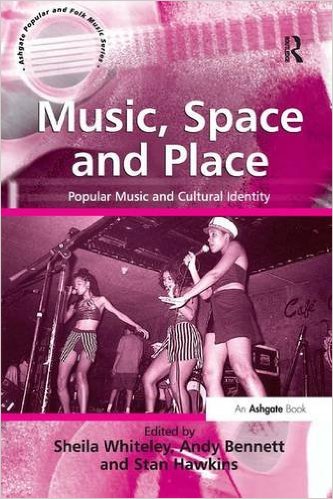
In a book about cultural theory, Maria del Pilar Blanco and Esther Peeren say that photography gives memory a place.
Steve Harrison and Paul Dourish, in a text on the roles of place and space, argue how in contrast to “space”, “place” is defined by its mutually available “cultural understandings about behaviour and action.” The simplest definition they give is the following; “Space is the opportunity, place is the understood reality.” However, in photography almost the opposite is taught. Place is very much location based, a concept which is made of concrete existence of what is around a place. Space, in photography, is therefore closer to Harrison’s and Dourish’s definition of place, being defined by its culture, context and human behaviour.
I would like to explore these definitions of place and space with my photography of people’s experience with music; commenting on the photographic place they are listening to the music in as well as the space the music takes them to, creating diversion from their normal, heavily digital modern lives.
 On a wider scale, music production itself comes from varying communities and cultural identities, often as a result of political and economic situations. As said in Music, Space and Place by Whiteley, Bennett and Hawkins, musical processes “take place within a particular space and place, one which is inflected by the imaginative and the sociological, and which is shaped both by specific musical practices and by the pressures and dynamics of political and economic circumstances.”
On a wider scale, music production itself comes from varying communities and cultural identities, often as a result of political and economic situations. As said in Music, Space and Place by Whiteley, Bennett and Hawkins, musical processes “take place within a particular space and place, one which is inflected by the imaginative and the sociological, and which is shaped both by specific musical practices and by the pressures and dynamics of political and economic circumstances.”
In this text, it is said that to find the meaning in popular music an analysis of the urban and rural spaces in which music is experienced daily needs to occur. This is strongly aligned with what I wish to visually show through my vernacular photography. Most crucially, they draw from DeNora (2000) saying that “music becomes a key resource for different cultural groups in terms of the ways in which they make sense of and negotiate the ‘everyday’.” This proves how music is an individual and, paradoxically, a collective experience, as it adds to your individual perception of reality while bringing you together with others who share similarities in this perspective. Again, I aim to visually capture this association and experience of music with the vernacular photography I am doing.
References:
Maria del Pilar Blanco and Esther Peeren (2013). The Spectralities Reader Ghosts and Haunting in Contemporary Cultural Theory. London: Bloomsbury.
Steve Harrison and Paul Dourish. (1996). Re-Place-ing Space: The Roles of Place and Space in Collaborative Systems ., pp67-68.
Andy Bennett (2005). Music, Space and Place: Popular Music and Cultural Identity. London: Routledge. pp1-3
